Forging is the ancient and magical craft of the door
Forging is a method of molding a metal by hammering. It is the process of forging and heat-treating steel to give it the desired hardness and toughness and shape. Solingen, the German city of Knife, is said to be shaking in the forging sound because it is spread over the tool workshop. Japanese kitchen knives are also representative of the forging process.
The forging process has a long history of complex techniques, repeated smelting, precise folding forging times, and can adjust carbon and impurities. The process of smelting, quenching, tempering and other processes is the accumulation of experience of craftsmen for decades or even generations. Traditional forging processes are costly and have high scrap rates, so historically, advanced tooling for hand forging is relatively expensive.
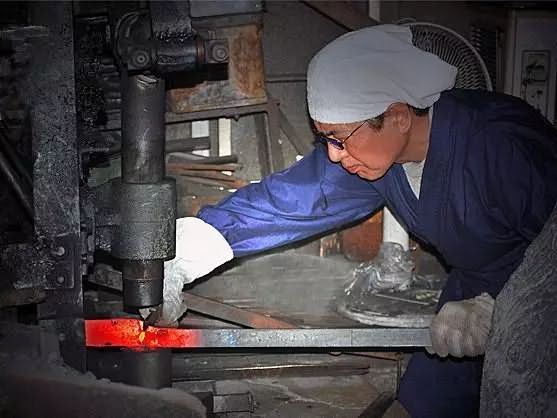
The process of forging requires heating. Heat treatment can improve the microstructure of steel, and the toughness, hardness and wear resistance of steel are related to heat treatment. To obtain excellent physical properties, it is necessary to use hardening (also known as quenching), tempering, annealing and surface hardening in heat treatment.
In the era of underdeveloped technology, heat treatment is a highly sophisticated technique. Today's artisan craftsmen still insist on using traditional techniques in top-level hand-knife, such as visually observing the difference in color of iron in thousands of degrees of high temperature. The temperature difference between the temperature and the temperature is often only between a few tens of degrees, which is related to the ancient Chinese glaze. The difficulty of the red porcelain is similar. Therefore, many key tasks must be completed until the evening. Only when the night is quiet and the black wind is high, the master's eyes can accurately perceive the subtle changes in the color of the steel.

The quenching and tempering process is also an important reason for the high scrap rate. Quenching is not just about water, but sometimes it uses a variety of oils.
The top product in the Japanese kitchen knife "this burning" refers to the all-steel blade (that is, the steel-clad steel technology is not used). The reason why it is expensive is not that steel is expensive, but that it is much more difficult to heat-treat under the traditional process. Due to the use of all-steel, this burning requires the samurai knife - the earth-filled blade. Through the difference in quenching temperature cooling, the difference between the blade and the back hardness is achieved, and the rigidity and flexibility of the knife are achieved.
The so-called "covering the blade" means that the blade is covered with the soil without the need for high hardness. The sword is heated to a specific temperature and then quenched, because the temperature change of the soil-covered part is not very obvious, resulting in hardness and naked parts. Different, so as to achieve the effect of rigid and soft, in the case of high blade hardness, still can maintain the good toughness of the blade. The curvature of the traditional Japanese samurai sword is not hammered out, but the natural curvature of the soil-burning blade when quenching.
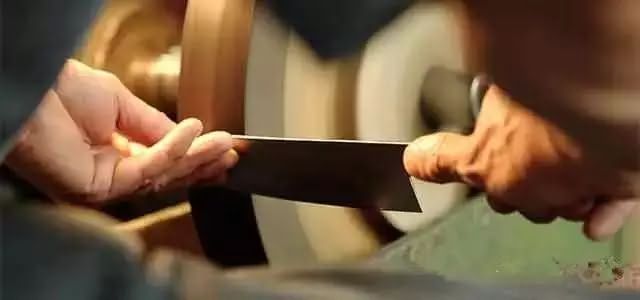
Stamping is not low, enough at home
Today, some German knives (such as TWIN Pollux, ZWILLING Style, and Chinese knives including Trigeminal, Zwilling, etc.) are stamped rather than forged. They are generally considered to have a lower level of craftsmanship than forged knives.
The advantage of the stamping process is that the cost of production can be greatly reduced. In the case where the properties of the steel used in the German kitchen knives are determined, the use of the stamping process does not affect the expected performance of the knife.
The materials of Zwilling are general, but the heat treatment is reliable. Zwilling gave his own heat treatment a name, called friodur, which actually hardened the surface of X50CrMoV15. When you see the so-called "ice hardened" advertising word from Zwilling, you know that this is the case. The characteristic of this process is that you will find that the Zwilling tool will need more and more frequent grinding after a few times. Because the surface of the high hardness treatment layer is worn away.
How to use good steel on the blade
Japanese kitchen knives generally use sandwich steel made of base metal stainless steel and high-hardness blade steel. It has high hardness and stainless quality. Damascus pattern steel is often used as the outer layer to obtain decorative effect.
Baotou Steel and Coated Steel are ancient techniques. It is a method of combining different steel characteristics to complement each other, in order to strike a balance between the performance of two or more steels. When these two methods are applied to the knives process, the materials generally used are steels with lower hardness and toughness on both sides; steels with higher hardness are used in the middle blade portion. This ensures that the blade has a higher hardness and the blade body has a higher toughness as a whole.
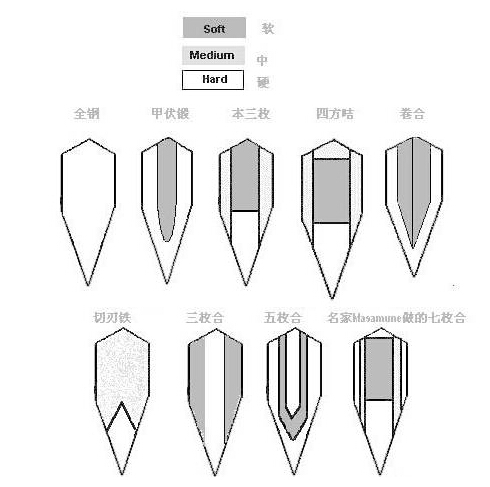
Japanese samurai sword complex steel ladle steel form
The steel and steel steel knives are very sharp and not easy to break when used, and the knives are relatively easy to sand - because there is only one middle steel and the two sides are iron, it is much easier to sharpen the knife. But this knife making process is more troublesome.
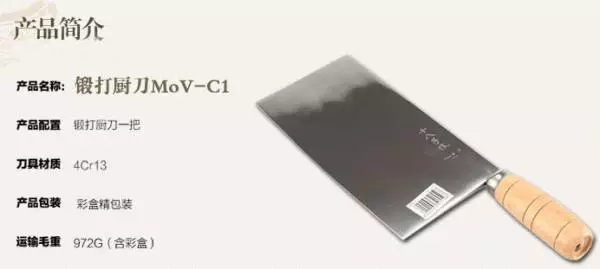
The 18-piece Sanhe Steel Kitchen Knife is a well-received Chinese-style knife. It is said that the New Oriental Chef School uses it.
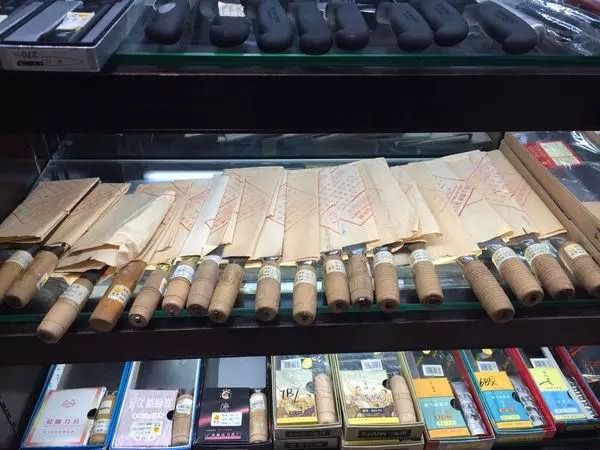
Known as the steel fire in the last inch, Hong Kong Chen Zhiji is welcomed by professional Chinese chefs, especially Cantonese chefs. It is cost-effective and professional.

Today's common Damascus kitchen knife has nothing to do with the ancient Damascus knife. They often mean a stunning outer layer, while the blade is still a high-hardness steel. You can see the obvious boundary between the blade part of the figure and the Damascus pattern of the blade.
Full Tang, the good body of the knife
Full Tang, refers to the overall tongue, the knife of the full keel, most of the high-grade kitchen knives are like this. But there are individual, such as VIER STERNE: Four Star, which made the Zwilling people famous many years ago. It uses a rivet-free all-plastic shank with a top and bottom structure for excellent grip. But not full tang, so the handle is light and heavy, and the balance is not good.

Designed in 1976, Zwilling became famous as Four Star, it is not Full Tang
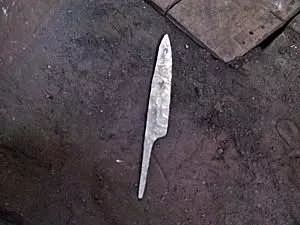
Full Tang is almost a must for advanced kitchen knives
Bladed style
The smaller the force used to cut the same thing, the more you feel the knife sharp. In the case where the resistance coefficient of the blade is similar, the sharpness depends on the geometry of the edge. The smaller the angle, the sharper it is. The new razors are basically able to break hair.
The traditional Japanese knife has a 15 degree angle, while the German knife is at 20 degrees, which is why Japanese kitchen knives are sharper. The German knife was later adjusted, and some had already made a 17-degree start.


Japanese names in differently opened forms

The edge is the characteristic of Japanese traditional kitchen knives.
Sharpening the knife is no easier than cutting the knife
Sharpening is a homework that every chef can't escape. Relatively speaking, Japanese is easy to rust and difficult to grind, and German is not easy to rust and relatively well ground.
Grinding stick is one of the most important tools on ordinary tool holders. Except for serrated knives, most German and domestic 5 chrome knives can be treated with sharpening knives. Higher hardness knives can't be used. .
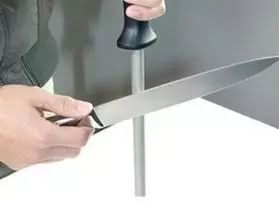
How to use the sharpening bar
The sharpening bar is not used to sharpen the knife, but to realign the edges of the irregularly wound edge, because the blade becomes irregular after each use; the sharpening bar is used by: the sharpening bar is fixed vertically downwards On the chopping board, the knife and the sharpening bar are at an angle of 20 degrees, which is rubbed by the knife to the tip of the knife, and the other side is also repeated. Wipe the sharpening stick and knife after completion.
Push-pull sharpeners are the most common sharpeners, but they are all V-shaped double-edged grooves. Even if the angle is adjustable, many people will not operate, and it is easy to destroy the original angle of the blade. This sharpener is characterized by simple and quick operation. Another major drawback is that it can be restored to basic sharpness, but it cannot be as sharp as the original.
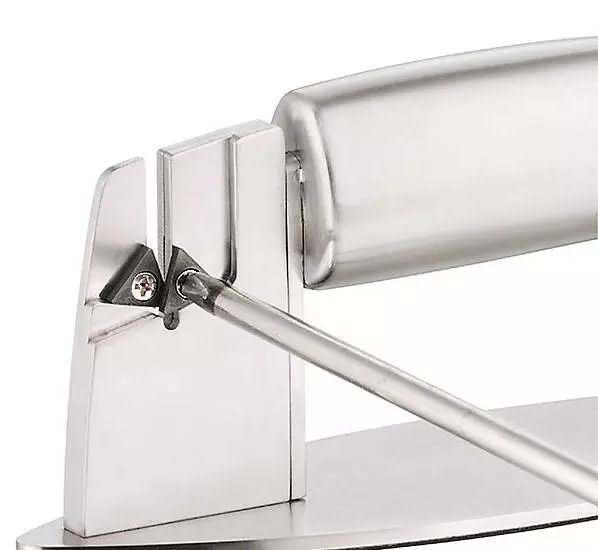
The push-pull sharpener is easy to use, and many people don’t know its edge angle is adjustable.The process of grinding stone is the oldest. "Huainanzi said mountain training": "The meteorite is unfavorable, but it can be rich." Today, the Chinese call it a sharpening stone, and the Japanese are also called meteorites. They can achieve the best results by sharpening them with a knife.
The meteorite has natural and artificial points. I remember when I was very young, my knife was ground on a natural whetstone, and later I had an artificial whetstone. Today, natural ochre grinding is the choice of advanced players. There are many doorways for the types, origins and techniques of natural ochre, which is difficult for amateurs to control.
The meteorite has a mesh number, and the sharpening stone with a mesh number of 600 or less can be edged, the edge angle can be changed, and the damaged blade can be repaired. The sharpening stone with a mesh size of 800~2000 can further correct the blade and restore the sharpness of the tool in a few times. A 6,000-hole whetstone is required to the extent that it is worn to blow hair. The whetstone with a higher mesh size and even 10,000 mesh is the tool for the pursuit of the ultimate perfection.
As a knife, it is really helpless, and all brands have basically returned to the factory for free.

Japan is rich in high-grade natural meteorites because of its special geological history.
In Japan, grinding is a separate technique in the knife industry. Getting started with grinding is difficult, and the middle of the world is quite deep. Once you get in, you can cultivate your body at the same time.
I can wear a weapon

High-carbon steel kitchen knives are easy to rust. When the knife is not in use, it needs to be dried and smeared in time. There is a special knife oil and you can use olive oil and castor oil in the kitchen.
Unless it is a Chinese knife, do not use it for garlic. High-hardness kitchen knives have limited toughness and may be broken. You can put the knife on the garlic and squeeze the knife to squeeze the garlic.
The wearer blade is not the ingredients, it is usually the partner of the kitchen knife - the cutting board. Do not use bamboo cutting boards, too hard. Choose a German kitchen knife, usually with a square wooden cutting board. Chinese kitchen knives with round vegetable piers, many hotels now use plastic vegetable piers, IKEA also has a lot of plastic chopping boards available; wood is generally selected iron, eucalyptus, ginkgo, pine, etc., you can also choose the Japanese love eucalyptus.
The sharpness of the advanced kitchen knife is more than the average person thinks, and it is very important to use the safety of the knife. The knife should be placed in an obvious place, not placed in the pool, or covered under something else, so as not to be accidentally injured.
The chopping board must be placed in a flat and stable place. A wet towel is placed between the table and the chopping board to prevent the cutting board from sliding and cutting the fingers.
When walking with the knife, be sure to point the knife down, close to your thigh, and see that there are no other people around, so that the blade does not touch others.
Trying to cook in different countries requires special study of the techniques, and you can do it as safely as possible.
High Temperature Alloy is divided into three kinds of material: 760 ℃ high-temperature material, 1200℃ high temperature and 1500 ℃ high temperature materials, the tensile strength is 800 mpa. On other words,it refers to the metal material worked well in the condition of 760-1500 ℃ or above. It owns excellent high temperature strength, good resistance to oxidation and thermal corrosion resistance, good fatigue properties, fracture toughness and other comprehensive performance, this kind of material has became an irreplaceable key material in military and civilian gas turbine engine hot end components . According to the relevant theory, 760 ℃ high-temperature materials, according to the matrix elements,can be mainly divided into high temperature iron base alloy, nickel base superalloy and cobalt-based super alloy. According to the preparation process,it can be divided into deformation and high temperature alloy, casting high temperature alloy and powder metallurgy super alloy. According to the solid methods,it can be divided into solid solution strengthening, precipitation strengthening and oxide dispersion strengthened with fiber reinforced type, etc.

High Temperature Alloy
High Temperature Alloy,High Temperature Alloy Wire,High Temperature Alloy Anti-Corrosion ,High Temperature Tooling Tungsten Alloy
Jiangsu nickel alloy Co.,Ltd , https://www.xhalloy.com